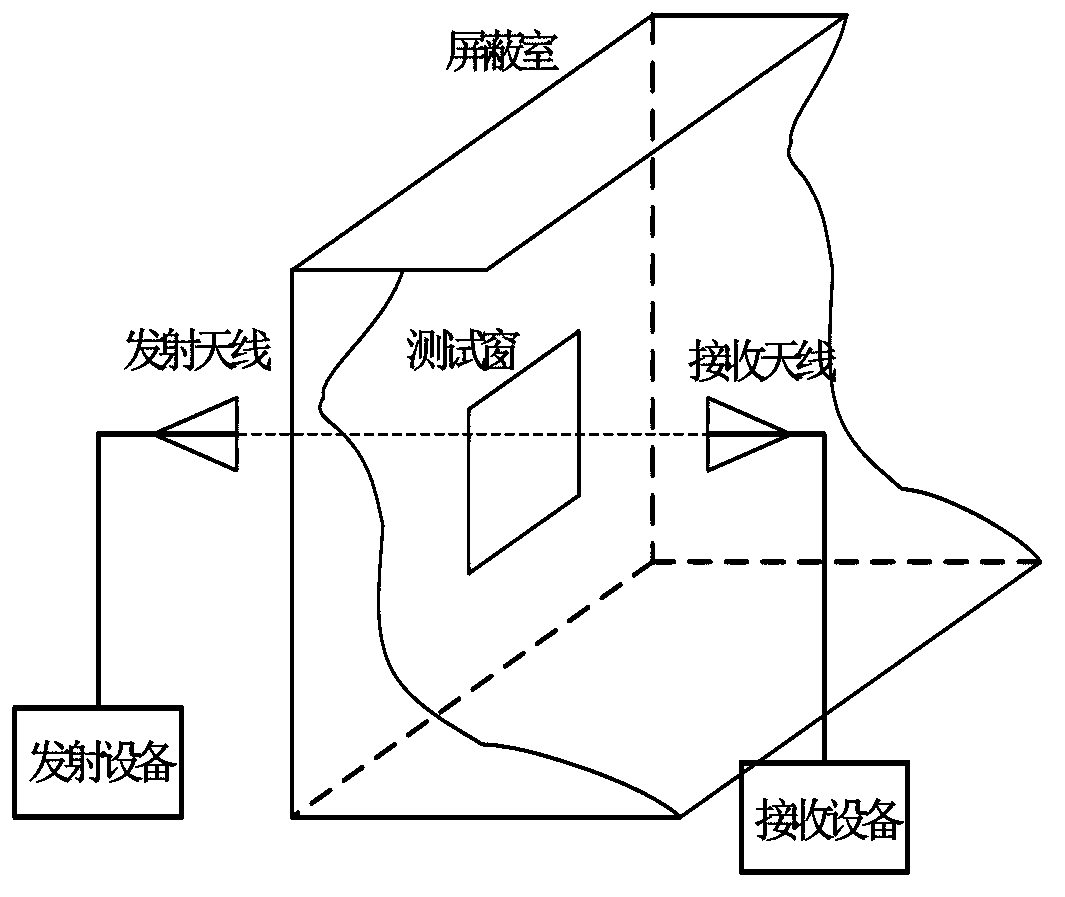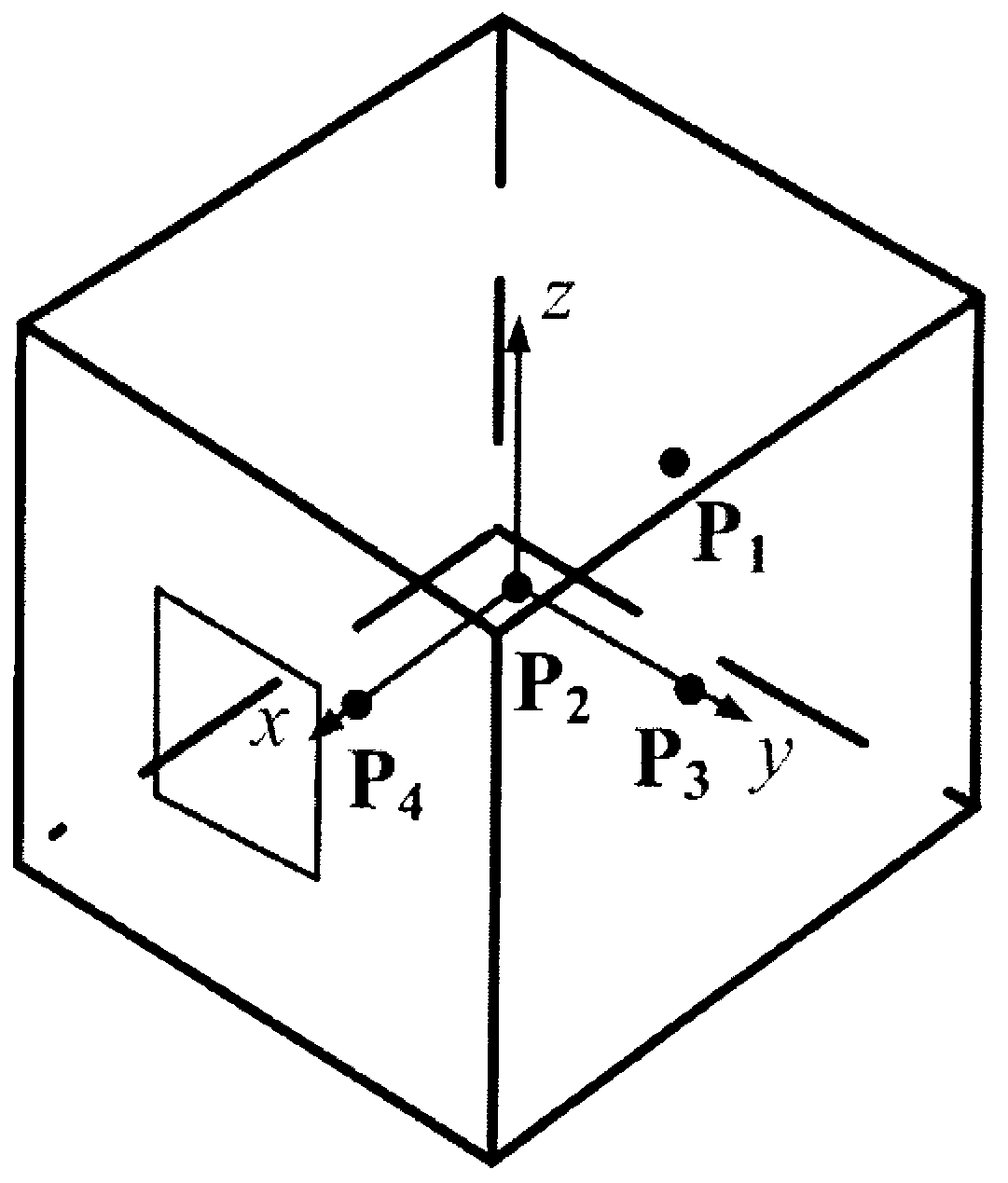Method for testing shielding effectiveness of electromagnetic shielding material
A shielding effectiveness, electromagnetic technology, applied in the direction of measuring electricity, measuring devices, measuring electrical variables, etc., can solve the problem that it is not portable or referable, cannot be used to judge the shielding effectiveness of materials, and cannot infer the conductivity of materials from it. parameters, etc., to overcome the effect of not having portability
- Summary
- Abstract
- Description
- Claims
- Application Information
AI Technical Summary
Problems solved by technology
Method used
Image
Examples
Embodiment 1
[0031] Such as figure 1 As shown, the shielding room is a cube with a side length of 0.4m, and the test window is a square with a side length of 0.12m. The transmitting antenna, the center of the test window, and the receiving antenna are on the same horizontal line. room center.
[0032] Step 1: Select a reference sample with known electromagnetic parameters, different electromagnetic frequencies, and set the electromagnetic emission intensity of the electromagnetic emission device.
[0033] Select a reference sample with a conductivity of 100S / m, a side length of 0.15m×0.15m, and a thickness of 2mm. Set the appropriate output amplitude of the transmitting device, and evenly select 10 electromagnetic frequencies in the 100MHz-1GHz frequency band (avoid resonance frequency points).
[0034] Step 2: use the reference sample to block the test window, and measure the electric field intensity received by the electromagnetic receiving device corresponding to different electromagn...
Embodiment 2
[0043] On the basis of the above steps, the present invention can further estimate the electrical conductivity of the material to be tested. Such as figure 1 As shown, the shielding room is a cube with a side length of 0.4m, and the test window is a square with a side length of 0.12m. The transmitting antenna, the center of the test window, and the receiving antenna are on the same horizontal line. room center.
[0044] Step 1: Select a reference sample with known electromagnetic parameters, different electromagnetic frequencies, and set the electromagnetic emission intensity of the electromagnetic emission device.
[0045] Select a reference sample with a conductivity of 10S / m, a side length of 0.15m×0.15m, and a thickness of 2mm, set the appropriate output amplitude of the transmitting device, and uniformly select 10 frequency points in the 100MHz-1GHz frequency band (avoid resonance frequency points) .
[0046] Step 2: Use the above-mentioned reference sample to block th...
PUM
 Login to View More
Login to View More Abstract
Description
Claims
Application Information
 Login to View More
Login to View More - R&D
- Intellectual Property
- Life Sciences
- Materials
- Tech Scout
- Unparalleled Data Quality
- Higher Quality Content
- 60% Fewer Hallucinations
Browse by: Latest US Patents, China's latest patents, Technical Efficacy Thesaurus, Application Domain, Technology Topic, Popular Technical Reports.
© 2025 PatSnap. All rights reserved.Legal|Privacy policy|Modern Slavery Act Transparency Statement|Sitemap|About US| Contact US: help@patsnap.com



